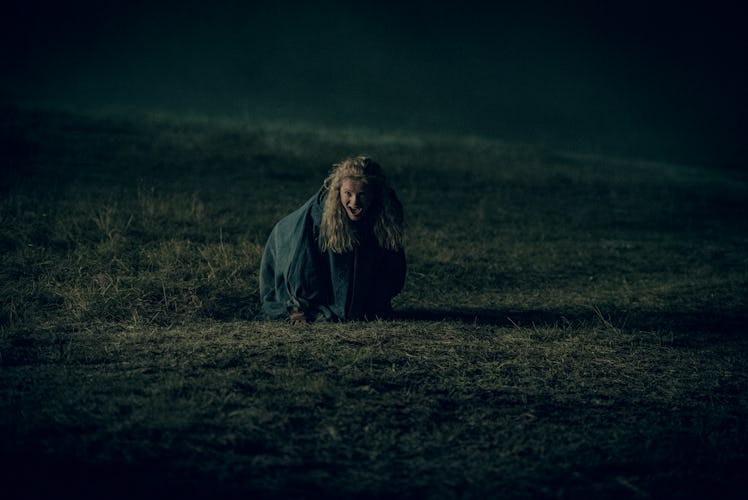
Let's Talk About The Monoliths On The Witcher
Here's everything you need to know.
Season 1 of The Witcher was a tale of monsters and the man designed to keep the Continent free from them. Season 2 saw Geralt mostly lay down his weapons and focus on a more significant issue, Ciri and her mysterious abilities. However, Season 2 still had a good deal of monster content — specifically, it focused on where these monsters came from in the first place in Witcher lore: the Monoliths.
Warning: Spoilers for The Witcher Seasons 1 and 2 follow. The mystery of the Monoliths has been lurking in the background ever since the show’s premiere episode back in Season 1. Ciri, terrified of capture by Cahir the Black Knight, let out a terrified, high-pitched scream. It is no ordinary cry of a young girl cornered after escaping the sack of her city, but rather one that shook the ground and the sky. A giant stone nearby in the middle of the empty field cracked in response; the ground ripped apart like an earthquake. It seemed Ciri’s own scream had saved herself; the crack separated her from Cahir, allowing her to escape with him unable to follow.
But this cracking of the otherwise unremarked-upon Monolith in the field had consequences. In Season 2, Geralt discovered new monsters he’d never encountered, all of whom were covered with the same dust. He and Istredd traced that dust back to the Monolith and the canyon Ciri created. According to Istredd’s theories, this canyon was not just a split in the earth, but rather the membranes of the universe, allowing the monsters to pass through. In short, the monoliths are a gateway to opening the multiverse.
The multiverse is currently a big fad in science fiction and fantasy. From His Dark Materials to the Marvel Cinematic Universe, the word gets tossed around without a lot of explanation. In short, it is the concept of the sixth dimension. One dimension is a line, height; two is a square, height and width; three a cube, height, width, and depth. The fourth dimension is time, a linear existence. The fifth and sixth posit not only is time a linear concept but also exists as a square (allowing for time travel) and a cube. Time with height, width, and depth is thousands upon thousands of strands, each containing a different variation of the universe — hence the multiverse. Each of these strands runs separate and distinct from the other until something causes the membrane between them to open.
In The Witcher lore, there was an event called “The Conjunction of the Spheres,” which sorcerers and historians believe was when the universe’s planets collided, allowing monsters and chaos magic to escape. However, Istredd discovered that this commonly accepted explanation is incorrect with Ciri’s destruction of the Monolith. The spheres did not collide. Instead, these monoliths attuned at the correct frequency, opening portals between multiverses.
These monsters did not escape, but instead accidentally passed through. Like Voleth Meir, they don’t want to be there any more than the populations want them roaming the countryside. They’re just wandering around, trying to find their way home. Perhaps Ciri can open the portals once more and send them there for good.
But what remains a mystery is chaos, aka magic. It, too, only appeared after the Monoliths opened the portals. If these portals are opened again, will magic head home? Or are these abilities here to stay?
There are a lot of questions about how this all works still left to answer, and the stakes for Season 3 just got a lot higher. The Witcher Seasons 1 and 2 are streaming on Netflix.